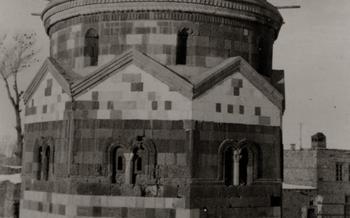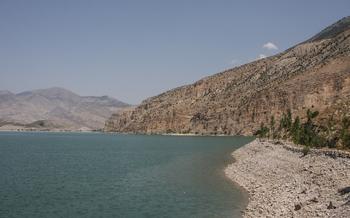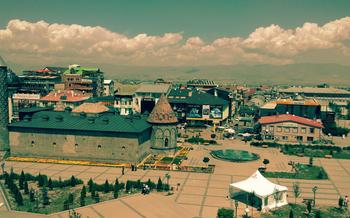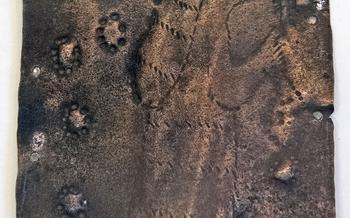
Ottoman Russian War Cemetery
- Historical Significance
- Russian-Ottoman War: Background and Context
- The Battle of Erzurum: Strategic Importance
- The Human Toll: Casualties and Consequences
- Location and Accessibility
- Cemetery Layout and Design
- Types of Graves and Memorials
- Notable Graves and Personalities
- War Artifacts and Relics
- Commemorative Events and Ceremonies
- Museum and Exhibition Center
- Educational Opportunities
- Respect and Etiquette
- Photography and Documentation
- Visitor Information and Facilities
- Surrounding Attractions
- Local Cuisine and Dining
- Insider Tip: Unveiling a Hidden Gem
Historical Significance
The Ottoman Russian War Cemetery is a poignant reminder of the devastating Russo-Ottoman War that spanned the years 1877 to 187This conflict, fueled by territorial disputes and political tensions, left an indelible mark on the region and the lives of those who fought in it.
Russian-Ottoman War: Background and Context
The Russian Empire, seeking to expand its influence in the Balkans and the Caucasus, clashed with the Ottoman Empire, which sought to maintain its dominance in the region. The war was sparked by Russian support for Slavic uprisings against Ottoman rule in the Balkans.
The Battle of Erzurum: Strategic Importance
The Battle of Erzurum, a pivotal moment in the war, was fought in 187The Russian forces, led by General Mikhail Loris-Melikov, laid siege to the strategically crucial city of Erzurum, which was valiantly defended by the Ottoman forces under the command of Marshal Ahmed Muhtar Pasha.
The Human Toll: Casualties and Consequences
The Battle of Erzurum resulted in heavy casualties on both sides, with tens of thousands of soldiers losing their lives. The Ottoman forces, despite their valiant efforts, were eventually defeated, leading to the fall of Erzurum and the eventual Russian victory in the war.
Location and Accessibility
Address: Finding the Cemetery
The Ottoman Russian War Cemetery is situated in the city of Erzurum, in the eastern region of Turkey. Its precise address is Ahmet Paşa Neighborhood, 25250, Palandöken/Erzurum. Located on Cumhuriyet Street, the cemetery is easily accessible by various means of transportation.
Public Transportation: Convenient Options
For those relying on public transportation, the cemetery is conveniently serviced by buses. Several bus lines, including the 104 and 105, have stops within walking distance of the cemetery's entrance. Simply inquire with locals or fellow passengers to ensure you get off at the correct stop.
Guided Tours: Benefits and Availability
To delve deeper into the historical significance and stories behind the graves, guided tours are highly recommended. These tours provide insightful commentary and anecdotes that bring the past to life. Guided tours can be arranged through local tour operators or your hotel concierge.
Cemetery Layout and Design
The Ottoman Russian War Cemetery in Erzurum is a vast and meticulously organized site that reflects the solemnity and respect accorded to the fallen soldiers. Spanning an area of approximately 20,000 square meters, the cemetery is home to over 3,000 graves, each bearing witness to the sacrifices made during the war.
The cemetery's layout follows a grid-like pattern, with rows of graves arranged in neat and orderly lines. This design creates a sense of uniformity and symmetry, emphasizing the equality and shared experiences of the soldiers who lie beneath. The graves themselves are marked with simple headstones, each adorned with inscriptions that provide information about the deceased, including their name, rank, and unit.
Interspersed among the rows of graves are several memorial structures that serve to honor the fallen and commemorate their bravery. These structures include monuments, obelisks, and mausoleums, which are often adorned with intricate carvings, inscriptions, and sculptures that depict scenes from the war or symbolize the virtues of the soldiers who fought in it.
The cemetery's landscaping and maintenance are meticulously carried out to ensure that the site remains a fitting tribute to the fallen. The grounds are kept immaculately clean, with well-maintained paths and flower beds adding to the serene and respectful atmosphere. The headstones and memorials are regularly inspected and restored, ensuring that they remain legible and well-preserved for generations to come.
Types of Graves and Memorials
The Ottoman Russian War Cemetery is home to a variety of graves and memorials, each with its own unique story to tell.
Soldiers' Graves: The vast majority of the graves in the cemetery belong to ordinary soldiers who lost their lives during the battle. These graves are marked with simple headstones, each bearing the soldier's name, rank, and date of death. In some cases, the headstones also include a brief inscription or prayer.
Officers' Graves: The cemetery also contains the graves of several high-ranking officers who were killed in the battle. These graves are typically more elaborate than those of the soldiers, and often feature ornate headstones or monuments. Some of the most notable officers buried in the cemetery include General Kâmil Pasha, who commanded the Ottoman forces during the battle, and General Nikolay Muravyov, who led the Russian army.
Mass Graves: In addition to the individual graves, the cemetery also contains a number of mass graves. These graves hold the remains of soldiers who could not be identified or who were killed in particularly bloody battles. The mass graves are marked with simple headstones or monuments, which often bear the names of the units or regiments that the soldiers belonged to.
Notable Graves and Personalities
Within the solemn confines of the Ottoman Russian War Cemetery, lie the graves of notable individuals who played significant roles in the conflict. Among these distinguished figures are high-ranking officers, whose contributions and sacrifices left an enduring mark on military history.
High-Ranking Officers: Generals and Commanders The cemetery holds the remains of several high-ranking officers who led their troops into battle. Their graves stand as testaments to their courage, leadership, and unwavering commitment to their cause. Visitors can pay their respects to generals and commanders who fell in the line of duty, their legacies forever etched in the annals of history.
Soldiers with Unique Stories: Discovering Personal Histories Beyond the generals and commanders, the cemetery also contains the graves of ordinary soldiers who fought and died in the war. While their names may not be as well-known, their stories are no less compelling. Through research and personal accounts, visitors can uncover the unique experiences and sacrifices of these individuals, shedding light on the human toll of the conflict. Each grave holds a poignant tale of heroism, resilience, and the indomitable spirit that defined the Ottoman Russian War.
War Artifacts and Relics
Within the confines of the Ottoman Russian War Cemetery, one can discover a treasure trove of war artifacts and relics that provide a tangible connection to the conflict and the lives of the soldiers who fought and perished here. Uniforms and equipment, once worn and used by the soldiers, offer a glimpse into their daily lives and the hardships they endured. Rusted helmets, worn boots, and faded insignia tell silent stories of courage, resilience, and sacrifice.
Weapons and ammunition, the tools of conflict, are also carefully preserved and displayed. Rifles, bayonets, and artillery shells, remnants of the fierce battles that took place on these grounds, serve as a stark reminder of the destructive power of war. These artifacts, remnants of a bygone era, not only hold historical significance but also evoke a sense of awe and contemplation, prompting visitors to reflect on the human cost of war and the fragility of peace.
Commemorative Events and Ceremonies
The Ottoman Russian War Cemetery stands as a solemn reminder of the sacrifices made by both sides during the conflict. To honor the fallen soldiers and preserve their memory, several commemorative events and ceremonies are held throughout the year.
Annual Commemorations: Every year, on the anniversary of the Battle of Erzurum, a grand commemoration ceremony is organized at the cemetery. This solemn event gathers representatives from the Turkish and Russian governments, military officials, and descendants of those who fought in the war. Together, they pay tribute to the fallen soldiers and remember the sacrifices made by both nations.
Military Parades and Enactments: To bring history to life and provide a deeper understanding of the events that transpired, military parades and enactments are occasionally held at the cemetery. These reenactments showcase authentic uniforms, equipment, and maneuvers, allowing visitors to witness the battle's grandeur and the bravery of the soldiers who fought.
Museum and Exhibition Center
Within the vast expanse of the Ottoman Russian War Cemetery, a museum and exhibition center stands as a testament to the historical significance of this hallowed ground. Situated strategically for easy access, this facility houses a wealth of exhibits and displays that provide visitors with an immersive journey into the past. Through meticulously curated artifacts, documents, and interactive displays, the museum sheds light on the intricate details of the Russian-Ottoman War, the Battle of Erzurum, and the profound impact these conflicts had on the region. It offers a compelling blend of historical insights and tangible relics, ensuring that the memory of those who fought and perished in this pivotal battle is preserved and honored for generations to come.
Educational Opportunities
The Ottoman Russian War Cemetery in Erzurum offers a unique and immersive educational experience for students, researchers, and history enthusiasts. The cemetery serves as a powerful testament to the human cost of war and provides invaluable insights into the historical events that unfolded during the Russian-Ottoman War.
-
School Visits: The cemetery is an ideal destination for school field trips, allowing students to learn about history firsthand. Guided tours tailored to educational groups can provide historical context, explain the significance of the site, and help students connect with the personal stories of those buried there. Interactive activities, such as quizzes and discussions, can further enhance learning and engagement.
-
Workshops and Seminars: The cemetery also hosts workshops and seminars for researchers, academics, and the general public. These events often feature presentations by historians, archaeologists, and military experts, who share their research findings and insights on the Russian-Ottoman War and its impact on the region. Workshops and seminars provide a platform for knowledge exchange, collaboration, and in-depth exploration of historical topics.
Respect and Etiquette
When visiting the Ottoman Russian War Cemetery, it is essential to demonstrate respect and etiquette befitting the solemnity of the site. This sacred ground is a memorial to those who lost their lives during the war, and visitors should conduct themselves accordingly.
Dress Code: - Dress respectfully and modestly. Avoid wearing shorts, tank tops, or revealing clothing. - Opt for neutral colors and conservative styles to maintain a respectful demeanor.
Behavior and Conduct: - Be mindful of your behavior and avoid any actions that may be considered disruptive or disrespectful. - Speak in a low voice and refrain from engaging in loud conversations or laughter. - Maintain a respectful distance from the graves and memorials, and do not touch or lean on them. - Refrain from climbing on the graves or engaging in any activities that may damage or disturb the site.
Photography and Documentation
Capturing the Moment: Guidelines for Taking Photos
The Ottoman Russian War Cemetery is a place where history is palpable, and many visitors find it inspiring to capture the moment through photography. While photography is permitted, it is essential to be mindful of the solemn nature of the site and to respect the privacy of others.
When taking photos, please be considerate and avoid disturbing other visitors. Flash photography is not allowed, as it can be disruptive and disrespectful to those paying their respects. It is also essential to refrain from taking photos of individuals without their permission.
Research and Documentation: Contributing to Historical Understanding
The Ottoman Russian War Cemetery offers a wealth of opportunities for research and documentation. Visitors interested in delving deeper into the history of the site can conduct research, take notes, and sketch the graves and memorials.
Researchers are encouraged to share their findings with the cemetery staff or local historical societies to contribute to the ongoing preservation and understanding of this important site.
Visitor Information and Facilities
The Ottoman Russian War Cemetery provides comprehensive visitor facilities to ensure a comfortable and informative experience. At the entrance, you'll find a well-equipped visitor center staffed with knowledgeable personnel who can provide maps, brochures, and historical context about the site. They can assist with any inquiries you may have and guide you towards points of interest within the cemetery.
For those seeking a deeper understanding of the events that transpired, an on-site museum and exhibition center offers a wealth of artifacts, documents, and interactive displays that shed light on the historical significance of the war and its impact on the region.
To ensure the well-being of visitors, there are clean and well-maintained restrooms located within the cemetery grounds. Whether you need a quick break or a place to freshen up, these facilities are conveniently accessible.
While exploring the cemetery, you may find yourself in need of refreshments to replenish your energy. Fortunately, there are vending machines strategically placed throughout the grounds, offering a variety of snacks and beverages to keep you hydrated and energized during your visit.
Surrounding Attractions
The Ottoman Russian War Cemetery is not just a site of remembrance; it also serves as a gateway to exploring Erzurum's rich history and culture. In the vicinity of the cemetery, visitors can delve into the city's past through various historical sites and cultural institutions.
-
Erzurum Castle: A short walk from the cemetery, Erzurum Castle stands as a testament to the city's strategic importance throughout history. Its imposing walls and towers offer breathtaking views of the surrounding landscape.
-
Yakutiye Medresesi: Located in the heart of Erzurum, Yakutiye Medresesi is a magnificent example of Seljuk architecture. Built in the 14th century, it was once a center of Islamic learning and is now a museum showcasing artifacts from Erzurum's past.
-
Erzurum Archaeological Museum: This museum houses a vast collection of artifacts from Erzurum's pre-Islamic and Islamic periods. Visitors can admire ancient pottery, jewelry, and sculptures that shed light on the city's rich cultural heritage.
-
Erzurum Ethnography Museum: To gain insights into the local traditions and lifestyles, visitors can explore the Erzurum Ethnography Museum. Displays of traditional costumes, handicrafts, and household items provide a glimpse into the daily lives of Erzurum's people.
These attractions, along with many others, offer visitors the opportunity to immerse themselves in Erzurum's history and culture, creating a well-rounded travel experience that extends beyond the Ottoman Russian War Cemetery.
Local Cuisine and Dining
No visit to Erzurum is complete without savoring the delectable local cuisine. The city boasts a rich culinary heritage that blends Turkish, Armenian, and Kurdish influences, resulting in a diverse array of mouthwatering dishes.
Must-Try Delicacies:
-
Cağ Kebabı: Tender lamb meat slowly roasted on a horizontal skewer and served with aromatic spices.
-
Döner Kebabı: Thinly sliced lamb or beef cooked on a vertical spit and served with fresh vegetables and sauces.
-
Erzurum Mantısı: Small dumplings filled with minced meat and topped with garlic yogurt sauce.
-
Kavurma: Slow-cooked lamb or beef stew with vegetables, a hearty and comforting dish.
-
Kuyu Tandır: Lamb or goat meat cooked in a clay oven, resulting in a smoky and succulent flavor.
Recommended Restaurants:
-
Cağ Kebabı Evi: Renowned for its exceptional cağ kebabı, a must-visit for meat lovers.
-
Dönerci Şakir Usta: A local favorite serving delicious döner kebabı with a variety of toppings and sauces.
-
Mantıcı Ökkeş: A cozy spot known for its handmade mantı, a must-try for dumpling enthusiasts.
-
Kavurma Salonu: Offering a range of traditional Turkish stews, including kavurma and other hearty dishes.
-
Kuyu Tandır Evi: A rustic restaurant specializing in kuyu tandır, a unique and flavorful lamb dish.
Insider Tip: Unveiling a Hidden Gem
Amidst the vast expanse of the Ottoman Russian War Cemetery lies a hidden gem that often goes unnoticed by visitors. Tucked away in a secluded corner, there rests a small monument dedicated to a remarkable individual who played a pivotal role in the battle. This unsung hero, whose name and story have faded from the annals of history, was a courageous medic who risked his life to save countless soldiers on both sides of the conflict. Despite the chaos and carnage that surrounded him, he remained steadfast in his duty, tending to the wounded and providing comfort to the dying. His selfless actions earned him the respect and admiration of both his comrades and his adversaries, who recognized him as a true embodiment of compassion and humanity in the midst of war.









